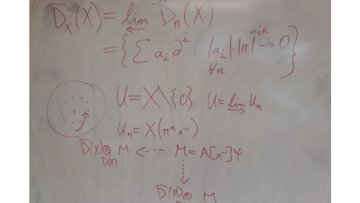15:45
Random triangular Burnside groups
Abstract
In this talk I will discuss recent joint work with Dominik Gruber where
we find a reasonable model for random (infinite) Burnside groups,
building on earlier tools developed by Coulon and Coulon-Gruber.
The free Burnside group with rank r and exponent n is defined to be the
quotient of a free group of rank r by the normal subgroup generated by
all elements of the form g^n; quotients of such groups are called
Burnside groups. In 1902, Burnside asked whether any such groups could
be infinite, but it wasn't until the 1960s that Novikov and Adian showed
that indeed this was the case for all large enough odd n, with later
important developments by Ol'shanski, Ivanov, Lysenok and others.
In a different direction, when Gromov developed the theory of hyperbolic
groups in the 1980s and 90s, he observed that random quotients of free
groups have interesting properties: depending on exactly how one chooses
the number and length of relations one can typically gets hyperbolic
groups, and these groups are infinite as long as not too many relations
are chosen, and exhibit other interesting behaviour. But one could
equally well consider what happens if one takes random quotients of
other free objects, such as free Burnside groups, and that is what we
will discuss.


